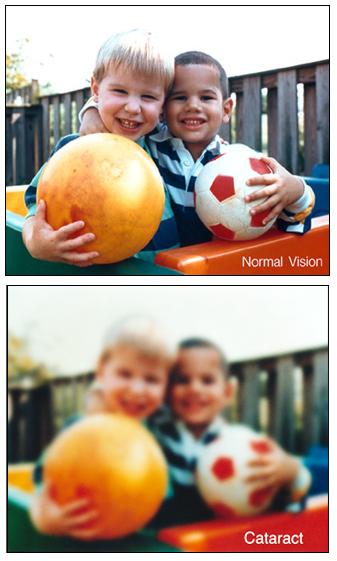I remember my father experiencing the removal of cataracts in the early 60’s, and being told by his Ophthalmologist that the recovery time would be weeks rather than days and a positive outcome was not guaranteed. The truth is that surgery of any kind carries with it a certain amount of risk. But now the removal of cataracts has become routine for thousands thanks to amazing technology and gifted eye surgeons. To the doctor, the surgery might be considered routine. But to the patient, when vision is at risk their concerns and real fears are not in any way routine.
A year ago at 96 years young, my friend and actress Betty White was worried about her vision. She told me that she was having a great deal of difficulty reading scripts and that her eyes would tire with the strain of trying to see the pages. Her ophthalmologist determined that the removal of cataracts was necessary and the surgery on the first eye was scheduled for the next Tuesday. “Is it safe? she asked me.” I assured my friend that the removal of cataracts was not something to be afraid of. “It’s routine” I told her. “Please don’t be frightened.” Betty’s surgery was completely successful. In fact, she tells me she can read everything including the smallest print on any label.
 At the Discovery Eye Foundation (DEF), we are committed to supporting research that we believe will make the treatment of many forms of vision loss far more predictable and successful. Whether it’s through the breakthroughs in surgery or the development of new drugs or the advancement in genetics or the use of stem-cells the major forms of vision loss are being greatly affected through the power of your contributions and the commitment of the gifted researchers DEF supports.
At the Discovery Eye Foundation (DEF), we are committed to supporting research that we believe will make the treatment of many forms of vision loss far more predictable and successful. Whether it’s through the breakthroughs in surgery or the development of new drugs or the advancement in genetics or the use of stem-cells the major forms of vision loss are being greatly affected through the power of your contributions and the commitment of the gifted researchers DEF supports.
Please know that the dollars you contribute to DEF will go directly into the hands of the researchers where they can do the most good.
All of us at the Discovery Eye Foundation thank you for your support and look forward to a time when most forms of blindness will no longer limit vision.


 Tom Sullivan
Tom Sullivan FIREWORK & EYE SAFETY:
FIREWORK & EYE SAFETY:  Even sparklers can be dangerous, as they burn at more than 2,000 degrees Fahrenheit. Sparklers were responsible for 1,200
Even sparklers can be dangerous, as they burn at more than 2,000 degrees Fahrenheit. Sparklers were responsible for 1,200